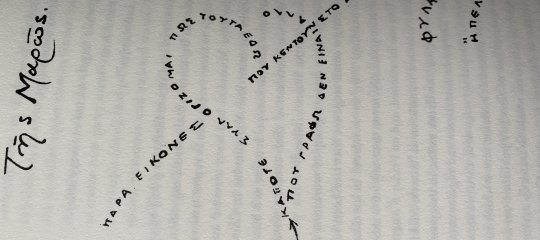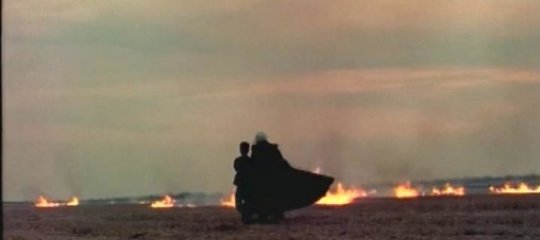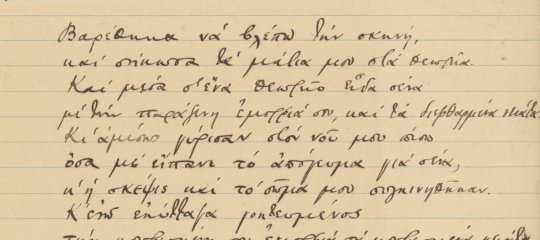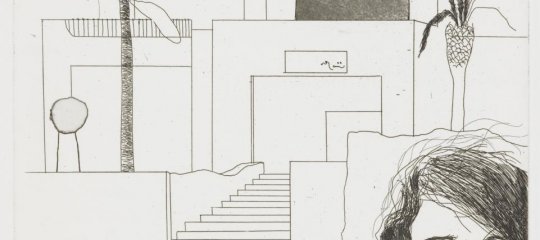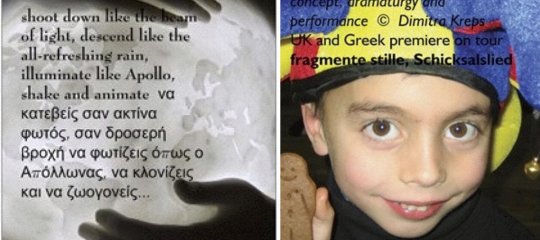Καβάφης - Δ. Τζανιδάκη
Week 5: C.P. Cavafy (1863-1933)
(by Dr Dimitra Tzanidaki-Kreps)
Αλεξανδρινοί βασιλείς
Μαζεύθηκαν οι Αλεξανδρινοί
να δουν της Κλεοπάτρας τα παιδιά,
τον Καισαρίωνα, και τα μικρά του αδέρφια,
Αλέξανδρο και Πτολεμαίο, που πρώτη
φορά τα βγάζαν έξω στο Γυμνάσιο,
εκεί να τα κηρύξουν βασιλείς,
μες στη λαμπρή παράταξη των στρατιωτών.
Ο Αλέξανδρος -- τον είπαν βασιλέα
της Αρμενίας, της Μηδίας, και των Πάρθων.
Ο Πτολεμαίος -- τον είπαν βασιλέα
της Κιλικίας, της Συρίας, και της Φοινίκης.
Ο Καισαρίων στέκονταν πιο εμπροστά,
ντυμένος σε μετάξι τριανταφυλλί,
στο στήθος του ανθοδέσμη από υακίνθους,
η ζώνη του διπλή σειρά σαπφείρων κι αμεθύστων,
δεμένα τα ποδήματά του μ' άσπρες
κορδέλλες κεντημένες με ροδόχροα μαργαριτάρια.
Αυτόν τον είπαν πιότερο από τους μικρούς,
αυτόν τον είπαν Βασιλέα των Βασιλέων.
Οι Αλεξανδρινοί έννοιωθαν βέβαια
που ήσαν λόγια αυτά και θεατρικά.
Αλλά η μέρα ήταν ζεστή και ποιητική,
ο ουρανός ένα γαλάζιο ανοιχτό,
το Αλεξανδρινό Γυμνάσιον ένα
θριαμβικό κατόρθωμα της τέχνης,
των αυλικών η πολυτέλεια έκτακτη,
ο Καισαρίων όλο χάρις κ' εμορφιά
(της Κλεοπάτρας υιός, αίμα των Λαγιδών)·
κ' οι Αλεξανδρινοί έτρεχαν πια στην εορτή,
κ' ενθουσιάζονταν, κ' επευφημούσαν
ελληνικά, κ' αιγυπτιακά, και ποιοί εβραίικα,
γοητευμένοι με τ' ωραίο θέαμα --
μ' όλο που βέβαια ήξευραν τι άξιζαν αυτά,
τι κούφια λόγια ήσανε αυτές οι βασιλείες.
Κωνσταντίνος Π. Καβάφης (1912)
Case Study 2: Alexandrian Kings
Last week we saw how the narrator in Kaisarion through an ‘insignificant mention’ in a book of ancient inscriptions which he was leafing enabled himself and the reader to recreate in a fantasy, partly erotic, the ideal ‘image’ of a young victim of history of a remote period. By way of Cavafy’s ‘historical epiphany in verse’ and through an apocalyptic for the nature of his poetics manner Cavafy subverts official historical validity shedding his own poetic cathartic light on Kaisarion.
Kaisarion also features, albeit less ‘dynamically’ in this poem written in 1912. The historical event represented here is the coronation of Cleopatra’s sons in the Alexandrian Gymnasium in 34 b.c. There is an underlying tragic irony in the Alexandrian’s indulgence in the spectacle since this is in fact the very last ceremony that the Alexandrians will so passionately enjoy. Egypt shortly afterwards will be conquered by the Romans.
Consider:
·How Cavafy perceives history as a theatrical stage and historical events as acts of a play.
·The rhetorical, triumphant tone of voice of the 1st part of the poem is cancelled in the second part (a good example of situational irony here where contradictory states are juxtaposed and by revealing the true nature of things the poet shows that the heroes’ concepts of reality are tragic illusions).
·How Cavafy ‘treats’ Plutarch’s passage to suit his own aims.
·The role of the Alexandrian crown, its composition, behaviour, and its ethos next to that of its leaders.
·The role of the children in the spectacle.
Case Study 3: Melancholy of Jason Kleander, Poet in Kommagini, A.D. 595
Μελαγχολία του Ιάσονος Κλεάνδρου· ποιητού εν Κομμαγηνή· 595 μ.Χ.
Το γήρασμα του σώματος και της μορφής μου
είναι πληγή από φρικτό μαχαίρι.
Δεν έχω εγκαρτέρησι καμιά.
Εις σε προστρέχω Τέχνη της Ποιήσεως,
που κάπως ξέρεις από φάρμακα·
νάρκης του άλγους δοκιμές, εν Φαντασία και Λόγω.
Είναι πληγή από φρικτό μαχαίρι.-
Τα φάρμακα σου φέρε Τέχνη της Ποιήσεως,
που κάμνουνε - για λίγο - να μη νοιώθεται η πληγή.
Κωνσταντίνος Π. Καβάφης
·Background: The poem’s title is one of the longest to be found among Cavafy’s poems. It is also quite unusually detailed. This way the historical ‘alibi’ for the poem’s internal monologue restricts itself to the title and thus the identification btn the fictional poet of the title and the real one is facilitated.
·Kommagini: an independent small state north-eastern of Syria forming part of the Byzantine Empire until 638 A.D. when it was occupied by the Arabs. There is also a reference of this placename in Seferi's 'Last Stop' too.
·This poem belongs to the ‘mature’ phase of Cavafy’s oeuvre (he was 58) and presents an imaginative dialogue btn a fictional Poet and Poetry itself. In his first appearance the poem had the title ‘Knife’.
Some questions/topics for particular interest:
·What would change in the poem should the title was: Melancholy of a Poet?
·In which expressive ways is the communication btn Poet and Poetry taking place?
·Internal intertextuality: Study Cavafy’s poem ‘I’ve brought to Art’ and its relationship to the one examined here.
·External intertextuality: Compare Cavafy’s perception of poetry with that of the first Greek Surrealist poet Andreas Embiricos’ (1901-1975), as defined in his poem-fragment ‘Altamira’s Strand’ from his ‘Hinterland’ collection (1945) (my translation):
Poetry is a development of a shiny bicycle. Within it
We all grow. The streets are white. The flowers talk.
From their petals little girls often emerge.
This excursion never ends.
Case Study 4: Young Men of Sidon (A.D. 400)
Νέοι της Σιδώνος (400 μ.Χ.)
Ο ηθοποιός που έφεραν για να τους διασκεδάσει
απήγγειλε και μερικά επιγράμματα εκλεκτά.
Η αίθουσα άνοιγε στον κήπο επάνω
κ' είχε μιαν ελαφρά ευωδία ανθέων
που ενώνονταν με τα μυρωδικά
των πέντε αρωματισμένων Σιδωνίων νέων.
Διαβάσθηκαν Μελέαγρος, και Κριναγόρας, και Ριανός.
μα σαν απήγγειλεν ο ηθοποιός,
«Αισχύλον Ευφορίωνος Αθηναίον τόδε κεύθει»-
(τονίζοντας ίσως υπέρ το δέον
το «αλκήν δ' ευδόκιμον», το «Μαραθώνιον άλσος»),
πετάχθηκεν ευθύς ένα παιδί ζωηρό,
φανατικό για γράμματα, και φώναξε:
«Α δεν μ' αρέσει το τετράστιχον αυτό.
Εκφράσεις τοιούτου είδους μοιάζουν κάπως σαν λειποψυχίες.
Δόσε -κηρύττω- στο έργον σου όλην την δύναμί σου,
όλην την μέριμνα, και πάλι το έργον σου θυμήσου
μες στην δοκιμασίαν, ή όταν η ώρα σου πια γέρνει.
Ετσι από σένα περιμένω κι απαιτώ.
Κι όχι απ' τον νου σου ολότελα να βγάλεις
της Τραγωδίας τον Λόγο τον λαμπρό-
τι Αγαμέμνονα, τι Προμηθέα θαυμαστό,
τι Ορέστου, τι Κασσάνδρας παρουσίες,
τι Επτά επί Θήβας - και για μνήμη σου να βάλεις
μόνο που μες στων στρατιωτών τες τάξεις, τον σωρό
πολέμησες και συ τον Δάτι και τον Αρταφέρνη».
Κωνσταντίνος Π. Καβάφης
Background: The poem was written in 1920 but ‘staged’ back to 400 A.D. in rich Sidon, a hellenized city in the coast of Phoenicia which has turned into a Roman constituency. Five wealthy and cultured young men are entertained in a house. They have brought along an actor to recite poems. Among the poems the actors recites is one epigram which tradition has it that it was written by Aeschylous ( 525/4-456 b.c.), the Great Athenian dramatist and one of the founders of Greek Drama, introducing a second actor to allow dramatic dialogue and action independent of the chorus. Aeschylus is believed to have written this epigram so as to be engraved in his tomb: “ This tomb covers Aeschylus, the Athenian, son of Euphorion, who died in the wheat-producing Gela; for his renowned valour can speak the sacred Marathonian grove and the Persian with the thick mop of hair, who knew it well”.
Some useful names:
·Meleager, Krinagoras, Rhianos: minor Hellenistic poets that applied themselves especially to the epigram and wrote mainly erotic poetry.
·Dates, Artaphernis: the Persian leaders in the famous battle at Marathon (490 b.c.) where “the Athenians fought for Greece and scattered the might of the Mede and all his gold” (Simonides). Aeshylus fought heroically too, got hurt and nearly died.
Some questions/topics of particular interest:
·What does Aeschylus’ epigram stress emphatically?
·Why is the Sidonian young man annoyed?
·With whom does Cavafy side?
·What are the ideals/values of the two different eras represented by Aeschylus and the Sidonian young man?
·What is the poem’s stance?
·Theatricality, didacticism, prosaic verse, use of persons as symbols, contemplative mood, backward temporal transfer are some of Cavafy’s recurring ‘tropes’. Is it the case in this poem?
·External ‘Intertextuality’: this poem has generated M. Anagnostakis’ poem entitled ‘The Young Men of Sidon, 1970” (see my translation below).
Anagnostakis was born in 1925 and belongs to the so-called first post-war generation of Greek poets, a generation marked by the Second World War and the Greek Civil (1944-1949) that followed it in Greece as well as their active political commitment to the Left. Anagnostakis’ poetry is often dominated by pessimism, antimilitary mood, anxiety and detest for the upcoming decay and corruption, a sense of fatigue triggered by a mundane soul-eroding everyday reality and a confessional tone combined with a sharp epigrammatic irony bordering on sarcasm. It has been suggested that Anagnostaki’s poem could be construed as Aeshylus’ answer to the Young man of Sidon in Cavafy’s poem. Combining theatrical and rhetorical techniques the poet and a named but silent friend of his (both belonging to a generation that actively fought and paid the price for their political, social ideals) denounce the ‘sofa young Greek rebels’ who are yet to demonstrate their ‘genuine’ revolutionary spirit against the Greek military dictatorship which silenced free Greece btn 1967-1974.
‘The Young Men of Sidon, 1970”.
We should not be complaining normally
Your company is nice and hearty, full of youth,
Fresh girls- able-bodied boys
Full of passion and love for life and action.
Nice, full of meaning and essence your songs
So very human, moving,
For the little children that die in another continent
For the heroes that got killed in other times,
For Black, Green, Yellow rebels,
For the yearning of the generally suffering Human Being.
Your participation particularly honors you
In the issues and the struggles of our times
You are directly and actively present-following that
You are, I think, more than entitled
To play, to fall in love, in twos, in threes,
And to unwind, boy, after so much effort.
(They aged us before our time, George, do you get it?)
·Draw parallelism btn the groups of ‘Sidonian’ young men in both poems!
·Compare the poets’ voices in both poems!

